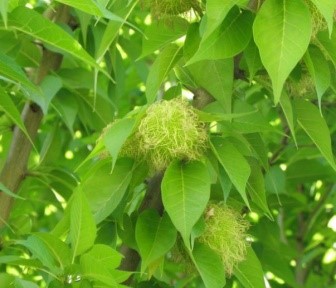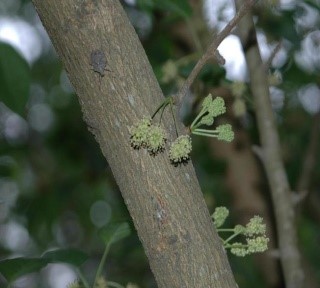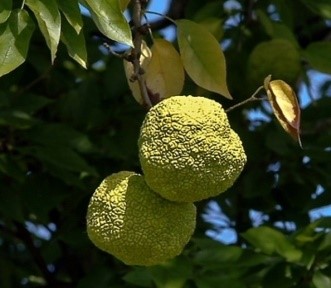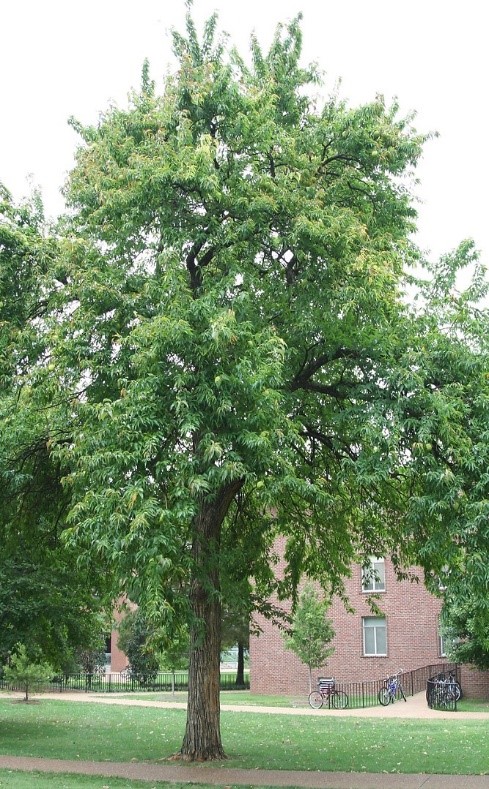Trees
Maclura pomifera (R.af) Schneid.
Maclura pomifera (R.af) Schneid.
Description :
Fully grown tree of this plant ranges from 12 to 20m in height. It has short trunks and round-topped canopies. It has thick grey-brown roots. The bark of fully mature tree is dark, scaly and furrowed. Branchlets are greenish yellow in colour Leaves are arranged in alternate pattern in a slender growing shoot is 80 to 30cm long. The leaves are 6 to 14 cm long and 4 to 9 cm wide and change into bright yellow in autumn season. Branches are bright green in start then later they become light brown and finally they become orange, brown. Flowers of the plant are four-lobed calyx, hairy ovary and enclose the fruit. The size of mature fruit resembles like a large yellow-green-orange fruit, and the fruit is about 10-15cm in diameter. The fruit tastes like the cucumber. Seeds cream colored, oval to oblong, base of seed is truncate or rounded, margins with narrow groove, apex rounded, mucronate; surfaces minutely striated or pitted.
Distribution :
This plant is native to the North America, and it largely restricted to a small area. It has been widely established in the United States and Ontario, Canada. The commercial range includes most of the country east of the Rocky Mountains, south of the Platte River and the Great Lakes, excluding the Appalachian Mountains. It can also be found in Pakistan.
Uses :
Its fruit is not edible due to its large
size and hard texture. However, squirrels eat its mature seeds. It is commonly
used as a tree row windbreak. Fluid extracted from the fruit can be used as
insect repellent. A tea made from the roots has been used as a wash for sore
eyes. The fruit is used in the making of medicines that are used in the
treatment of cardiovascular problems. Its wood is hard and can be used in
different commercial purposes like furniture etc.
(Tsao
et al., 2003; Hassler 2000)



